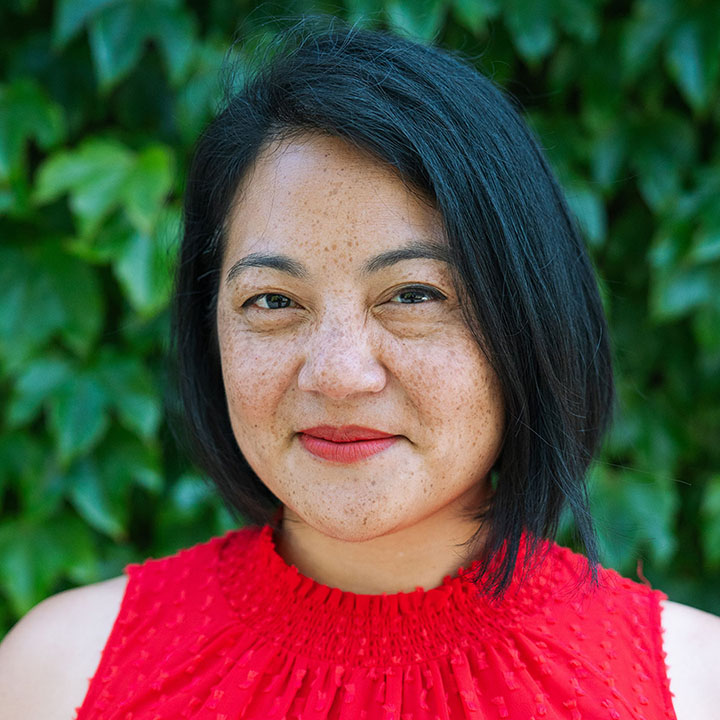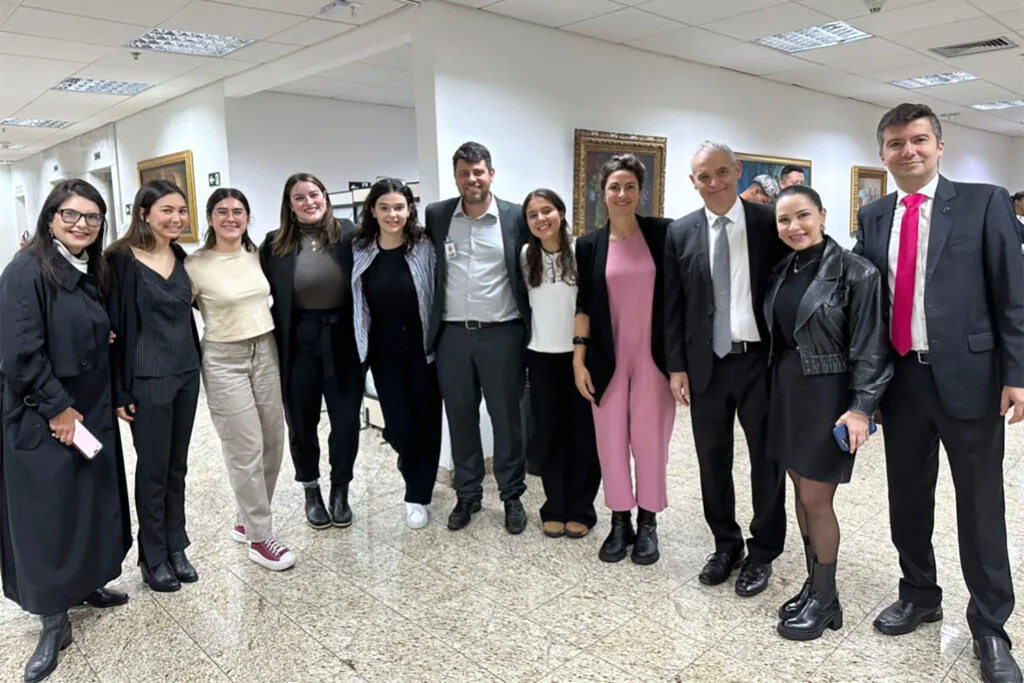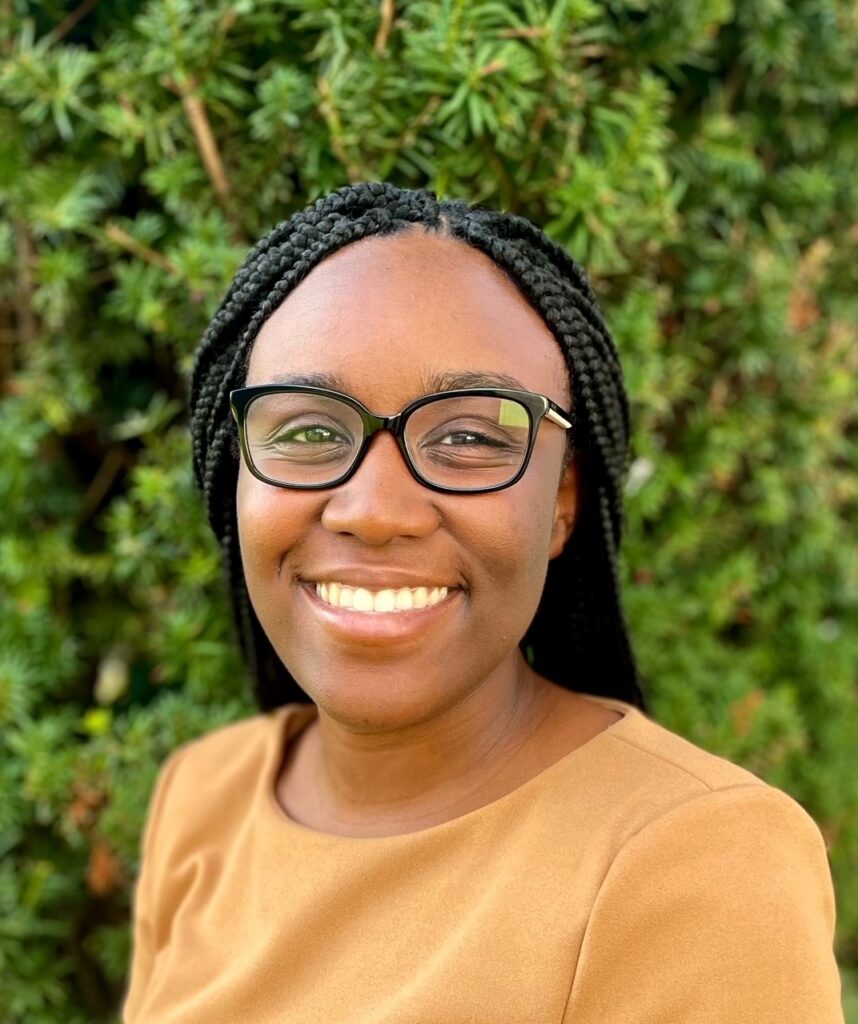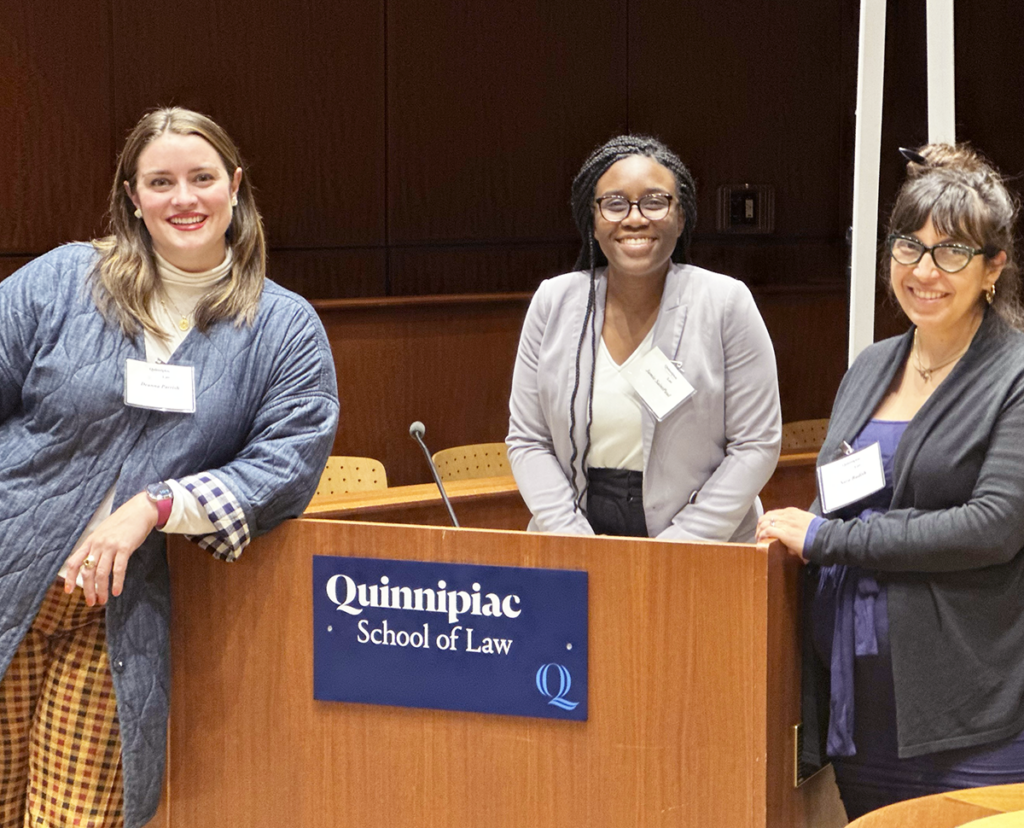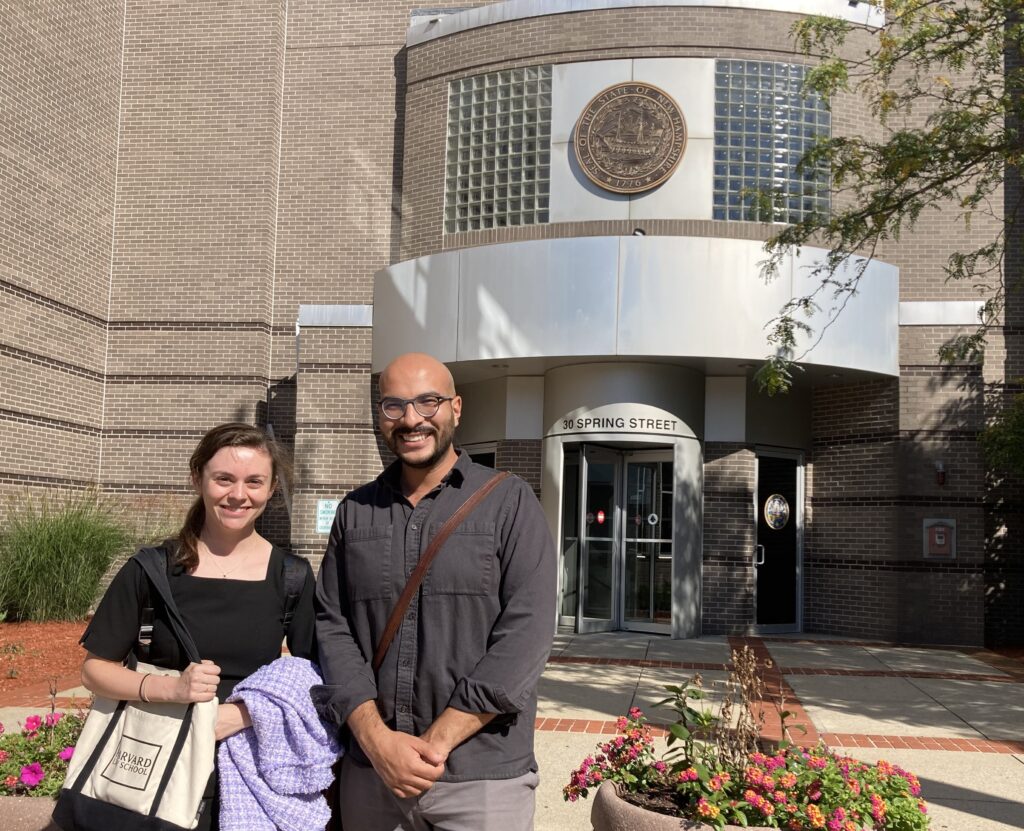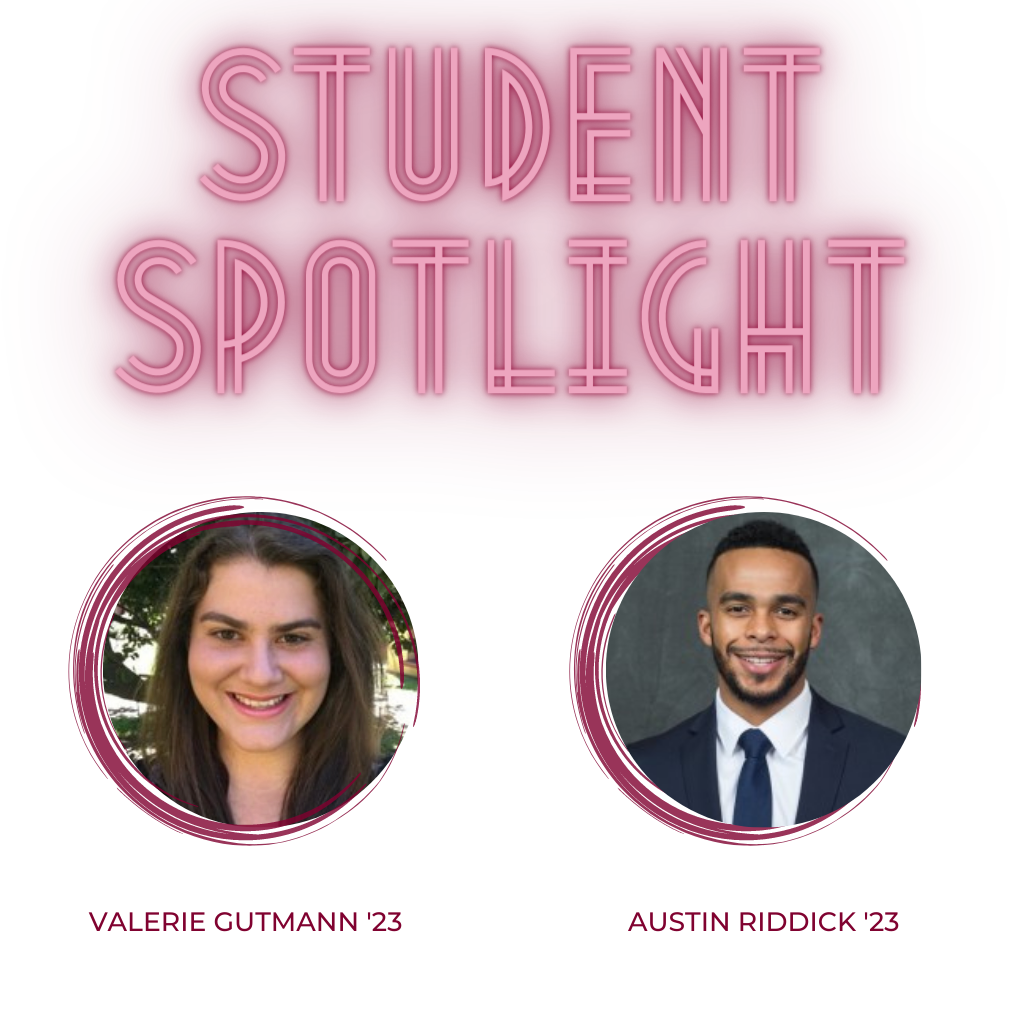 Patrick Maxwell is a dual-degree candidate for his JD at Harvard Law School and his MA in Law and Diplomacy at The Fletcher School at Tufts University.
Patrick Maxwell is a dual-degree candidate for his JD at Harvard Law School and his MA in Law and Diplomacy at The Fletcher School at Tufts University.
We first met Patrick as a client in the spring of 2016 when we did a project in the Democratic Republic of Congo with the Mennonite Central Committee. Two-and-a-half years later, we welcomed Patrick as a student into the Harvard Negotiation & Mediation Clinical Program’s Dispute Systems Design Clinic for his first clinical project serving the Public International Law & Policy Group (PILPG). Patrick and his teammates created a portfolio of coalition-building materials that would allow PILPG to provide relevant and targeted support to clients interested in building and operating as a coalition during peace and political processes. Patrick worked with the Dispute Systems Design Clinic again this past spring on a project he cultivated and brought to us with the Southwest Initiative Foundation. The events of the past year and the work of this second project, which focused on creating a framework for community conversation that bridges heated divides, have steered Patrick’s future in a new direction from the one he envisioned when he first applied to law school. Patrick has been deeply involved in the ADR community at HLS. He has taken the foundational Negotiation Workshop, been a student in the Dispute Systems Design Clinic twice, and taken almost all of HNMCP’s reading groups and advanced courses (Contemporary Dilemmas in Dispute Resolution, the Facilitation Workshop, the Principles of Dispute Systems Design seminar, and the Multiparty Negotiation workshop). Additionally, he has served as an active mediator and trainer in, and co-President of, the Harvard Mediation Program. This spring he also contributed a thought-provoking series to the HNMCP blog. Tracy Blanchard had a chance to catch up with Patrick during a Zoom call, which is transcribed and lightly edited here.
HNMCP: We’ve had several students over the years who have done the dual-degree program that you are in, between The Fletcher School at Tufts University and the J.D. program at Harvard Law School (HLS). What was it about that combination that appealed to you?
PM: [Laughs] I guess I did the thing that everyone says you’re not supposed to do, which is to go to law school with no real explicit intentions of becoming an attorney. It was the alternative dispute resolution curriculum that brought me to law school. And then I figured it would be good to additionally have a substantive focus. The plan was to go back and keep working in conflict zones. So I wanted to have the process skills from HLS and a substantive focus on armed conflict from Fletcher.
HNMCP: When we first met you, you were actually a client of HNMCP, working in the Democratic Republic of Congo with an organization that was supporting the U.N.- and government-led process of voluntary disarmament and repatriation of Rwandan refugees and members of the Forces Démocratiques pour la Libération du Rwanda. So you’ve been on both sides of an HNMCP dispute system design project, as client and designer. Any reflections on that?
PM: What’s most present to me right now is around the need for flexibility as a dispute system designer. For example, I’m thinking about the project in the DRC when I was a client. The students were working across cultures and languages. When the team came and did the final presentation, it all had to be translated and as the client, and the American who was working with a Congolese partner organization, I kept thinking about all of the differences between the eastern Congo and Cambridge, Massachusetts, that are, in fact, very, very relevant, but had never been quite important enough to bring up on the various calls with the students before they came over to the country. And I was very impressed with the student team when they arrived to give their training—they really rolled with all the stuff that was different and new and unexpected. A story that stands out in my mind is when the team did their presentation, their training with the partner organization I was working with at the time. They were halfway through a slide on the ladder of inference and the power cut out. We were at a hotel that had a generator and so somebody went to start it up. But Lisa [Dicker ʼ17, now a Clinical Instructor at HNMCP] went on, totally unfazed. The slide that was up was the ladder of inference and when the power went out, Lisa held up her hands and stepped wider and said to her teammate, “I’m the new ladder. You can demonstrate on me. Like, here’s the top rung and then you walk down”.
HNMCP: [Laughs] I can totally imagine Lisa doing that.
PM: [Laughs] Yeah, it was a great moment. And that experience—being on the client side of a project—came with me into my student experience. Being aware of these differences, being able to anticipate them, or just not being thrown by them when they come up, is really important to the work, to having a good relationship with the client and stakeholders you’re serving.
Ironically, it is through my previous work in South Sudan that I got connected to the client in my current project as a student—the Southwest Initiative Foundation (SWIF). The organization I used to work for in South Sudan has their U.S. offices in Minneapolis. They’ve had a front row seat for the George Floyd killing and subsequent protests in the state, and they knew SWIF and had heard of the arrival of the Asatru Folk Assembly (AFA), a white supremacist, neo-folkish group who purchased a vacant church in southwestern Minnesota. That chain of relationships is how I proposed a project with HNMCP and SWIF, and now I and my teammates are working with SWIF to create a framework for community conversations that use shared values to bridge divides, by educating and engaging stakeholders in thoughtful conversations around race and equity.
HNMCP: Your first project with our Clinic also focused on the work of peacemakers, with the Public International Law & Policy Group (PILPG). How did that inform you as a lawyer and peacemaker?
PM: PILPG engaged us to create a portfolio of coalition-building materials that would allow the organization to rapidly provide relevant and targeted support to their clients who were building and operating as a coalition during peace and political processes. This meant doing a lot of stakeholder interviews. That skill set of being able to do an assessment, talking to a bunch of people to get to the root of a question or an issue, and then coming up with some kind of deliverable or report, that was really helpful.
And I took that into an internship last summer with the International Rescue Committee (IRC). I did a project on basically harmonizing between their field protection teams and their access teams—a lot of humanitarian jargon [laughs]. I got quite a bit of positive feedback. I think my supervisor was pretty happy with the project and, in large part, that was because I’d just come off this practice run with the Dispute Systems Design Clinic.
HNMCP: So this work is really being able to look at a system and see how the different parts work or don’t work together and how to correct for that to make the whole system better.
PM: Exactly. In an academic environment you have immense amounts of data to apply to any particular question. But with PILPG and the IRC, there wasn’t a lot of data or academic literature about their particular questions because they were very specific to these organizations. So a lot of those projects were thinking about how to, and then having the practice of, talking to people, digging into their interests. Understanding how the broader system has worked and then coming up with some recommendations that might actually be helpful. You can’t do a LexisNexis search, you know, and pore through the results for hours [laughs]. You’ve got to do the interviews with the people that are in it, and then go back to the published literature and see what’s applicable to the specific problem you’re facing. I think that’s a really helpful skill set as well.
HNMCP: This conversation is pointing to the ways in which the skill set necessary for dispute system design is more along the lines of consulting than a traditional lawyer’s toolkit. What is challenging and/or appealing about developing this skill set?
PM: There are the certain types of things I enjoy getting from books, don’t get me wrong. But I really enjoy the process of talking to people. I especially like understanding new worldviews, a new place, a new set of dynamics. In my current project with SWIF, we’re learning about southwestern Minnesota, about the two Dakota nations that are in the area, and then the Scandinavian white population that moved in later on, and then since the 80s, immigrants from Central America and Somalia and Karen people from Myanmar, and just the whole mix of that specific place. I guess that is something you could get from a book, if someone’s written that book. But you can go and talk to a bunch of people and figure out what that mix is and that’s something I really enjoy. It feels a bit more actionable, more immediately relevant, whereas if you learn a bunch of legal principles out of a book, you can go and apply them, but there’s a greater disconnect from lived reality. But I’m glad somebody is doing the theory, and I’m glad it’s not me [laughs].
HNMCP: During your time at Harvard, you have also been involved in the Harvard Mediation Program. I’m curious about any reflections you might have on the differences between mediation, negotiation as you explored it in the Negotiation Workshop, and the dispute system design skills you’ve been doing with the Clinic.
PM: On the one hand, I guess you can think of the Harvard Mediation Program (HMP) as being very, very different from the Dispute Systems Design Clinic just in terms of the clients—mediation as practiced in HMP is about individual parties and small claims courrt. There are two parties and it’s very time bound and there’s no specific outcome that you’re hoping to facilitate. And then compare that to DSD and having a much broader potential mandate over a much longer period of time.
But there are also a lot of things about them that are very, very similar. I’m struck by how often the two core skills of the HMP basic training—the active listening piece and the positions-to-interest piece—apply in systems design. I think Prill Ellis [former Clinical Instructor at HMP] has said, if you just do those two things really well, then you’re most of the way to being a mediator. It’s really interesting how much I find myself using interest identification in interviews with stakeholders, for example, or just the active listening skills of paraphrasing what somebody said back to them and then seeing if you got it right. The best interviews are ones where you can dig underneath the things that people are saying. Being interviewed is something that really doesn’t happen very often for most people. And the kind of thinking that being interviewed can spark off is really, really helpful to beginning to sort out all these sticky social problems of racism, or all the other things that are happening in southwestern Minnesota, for example
HNMCP: One of the foundational concepts that’s being actively discussed in the dispute resolution field more broadly, and especially in the era of the powerful Black Lives Matter movement and our nation’s grappling with racism and inequity, is the idea of “neutrality.” A lot of practitioners are really questioning whether such a concept is something one should aspire to, and whether it perpetuates inequitable systems. I wonder about your thoughts on this, as one of the rising generation of practitioners of dispute resolution.
PM: Just a few weeks ago we finished the Harvard Mediation Program basic training. And I think HMP has been trying to figure out for a while how to address things like privilege and racism and bias in the context of mediation. I and some of the other trainers, Anna Vande Velde ʼ21 and Emma Lewis ʼ21, worked on a module on privilege and bias. And in the feedback survey someone asked, “Do you think mediation is a tool for dismantling white supremacy?” which is a very not-neutral framing of what mediation can or should be, right? So I had to sit and think about that. I was like, well, actually, is it?
And I think it can be. If it’s not, then I’m maybe less interested in it. As ADR people we’re dealing with process tools instead of substance, I think. A lot of the conversation about dismantling white supremacy revolves around the idea of calling it out and making it public. But that’s something you can’t really do as an ADR professional, if for no other reason than, you know, the solution that you’re going for probably requires buy-in from everyone. And if you spend a lot of your time as the facilitator, or the mediator, calling someone out, then they’re probably not going to buy into any proposed solutions or settlement. But then on a deeper level, I think that one of the functions of white supremacy has, historically, been to deny voice and agency to specific populations in this country. And the ADR emphasis on the process, on everybody having a voice and having agency, I think that changes outcomes in ways that are more equitable.
I guess that’s to say I think there’s the possibility of processes that increase voice and agency and require buy-in from everyone. That, in and of itself, makes it impossible for one group of people to dictate an outcome. I think it’s not perfect by any means. We had a long conversation in the training debrief about both structural elements of bias and then also personal elements of bias—like if a mediator themselves is consciously or subconsciously biased in a certain direction, that’s going to have a huge effect on the outcome of a case, even if the mediator is not making any decisions, just in terms of who they give airtime to. It’s probably a messy and imperfect tool, but then… what isn’t?
HNMCP: Are there other areas of dispute system design that that you think need more attention, updating, or rethinking?
PM: Something I’ve been thinking about a lot, kind of grappling with or discontented with, is how tied ADR is to the legal system or to a particular corporation’s internal human resources department or a university ombuds office or something like that. It’s just becoming very, very clear that there are a lot of problems that I think ADR could be really relevant to, but by the time they show up in the legal system, it’s going to be too late. I’ve been following militia movements and extremism and it’s very clear that in a lot of situations the legal system just has nothing, no hook into the problem, until someone has already committed a shooting or stormed the Capitol building. The skills I’ve been learning in ADR classes at HLS are really relevant to the prevention side of things. But so long as they’re packaged as add-ons to the legal system, they’re less relevant because of it.
I think it comes down to being proactive versus being reactive. Maybe it’s hard to get people convinced that you need to be proactive about something that hasn’t happened yet. I think that’s part of a huge problem. There were people who were paying attention, who could say with pretty high certainty that something bad was going to happen on January 6th. American culture wars are getting more and more sharp and at some points violent, and it’s been building for a while. I would love to see ADR professionals trying to address those conflicts more proactively.
HNMCP: So maybe this brings us to that dreaded question of what are you planning on doing after graduation?
PM: It’s all sort of in flux. My plan entering law school had been to get this great skill set of negotiation and mediation and dispute systems design and all that, and go back to a peacebuilding NGO like the ones I’d been working for before graduate school. But I began thinking about it I guess just under a year ago—when the George Floyd protests were going on and then during this past fall, and then on January 6th—and I’m coming to the conclusion that this peacebuilding skill set is getting pretty relevant within the U.S. So the current plan is to try and find an organization like the ones that I was working for in Central Africa, but that’s doing similar work within the U.S. It’s a fairly short list, but that’s the field I’m looking into right now.
HNMCP: Any advice for the students coming up after you?
PM: Oh, boy. I have no advice. [laughs] Talk to me in a couple of years and I’ll let you know if the things that I’m trying right now were good ideas, OK?

